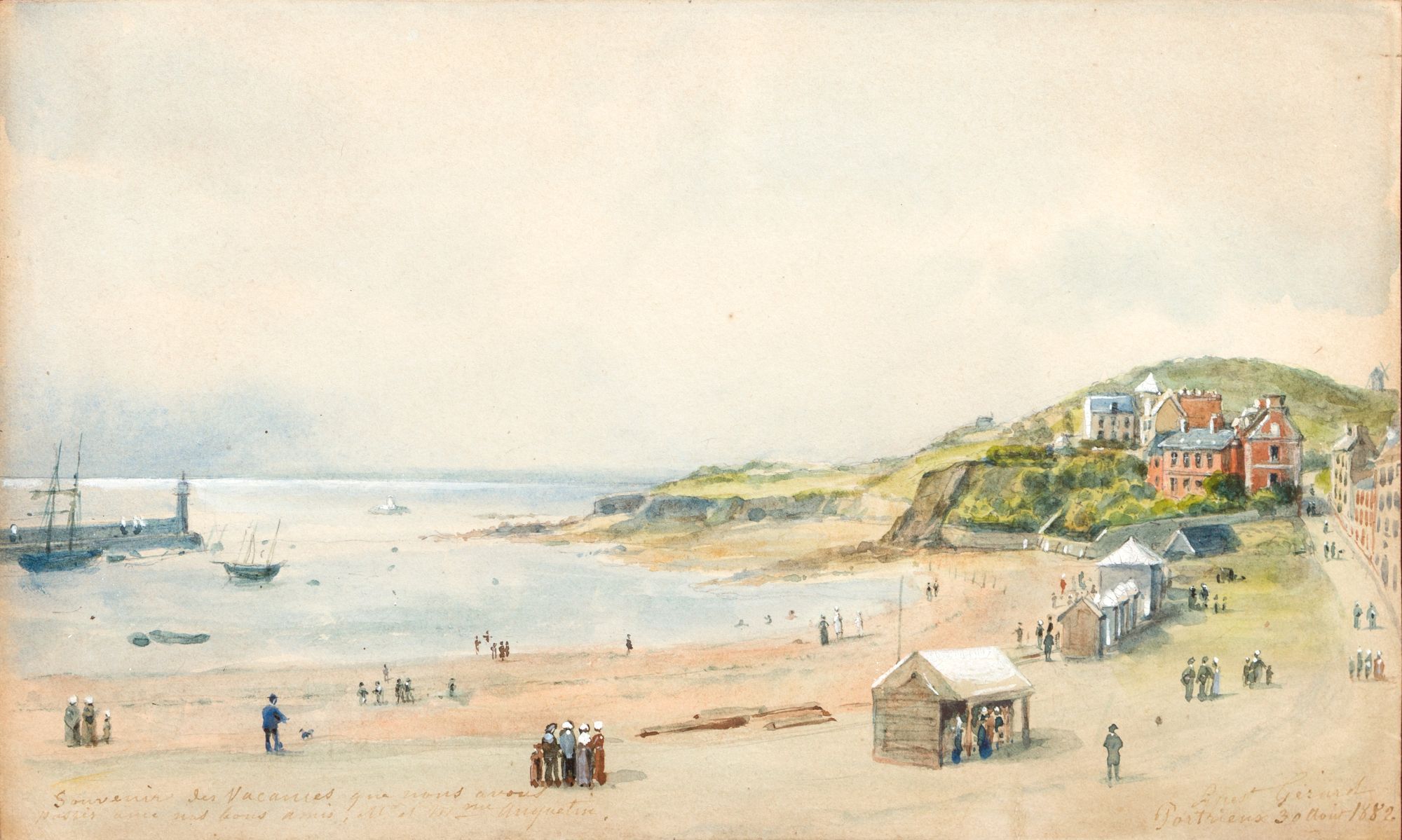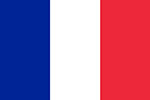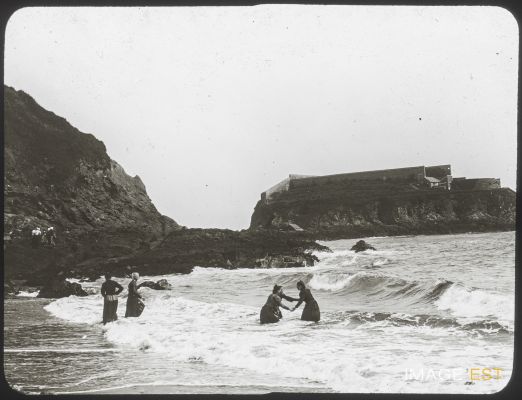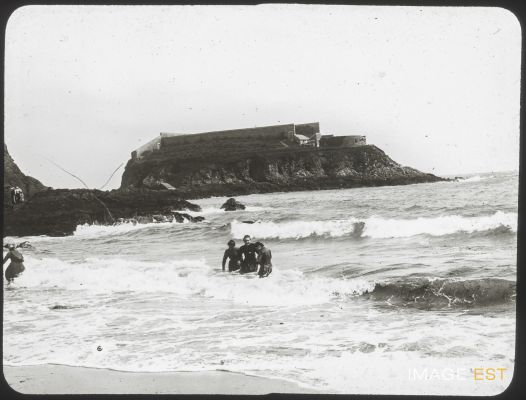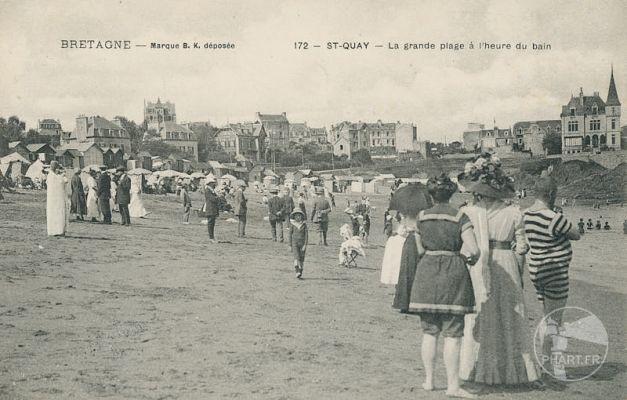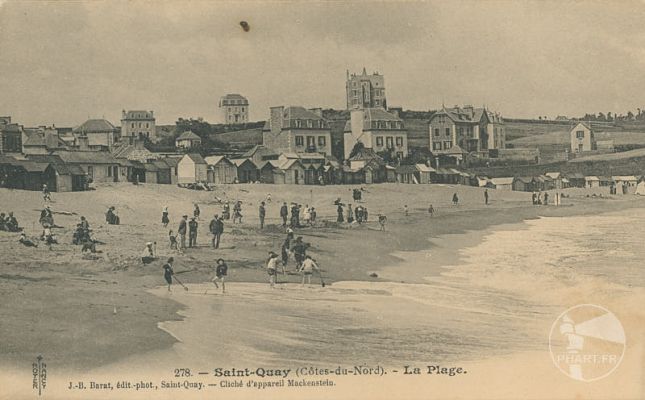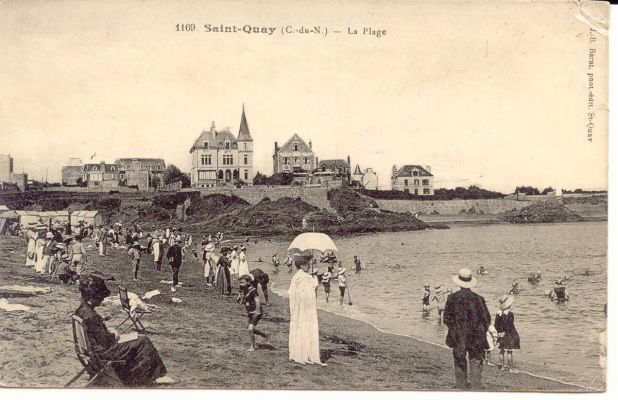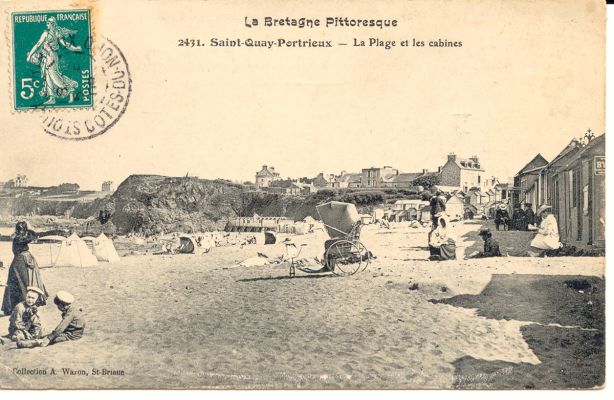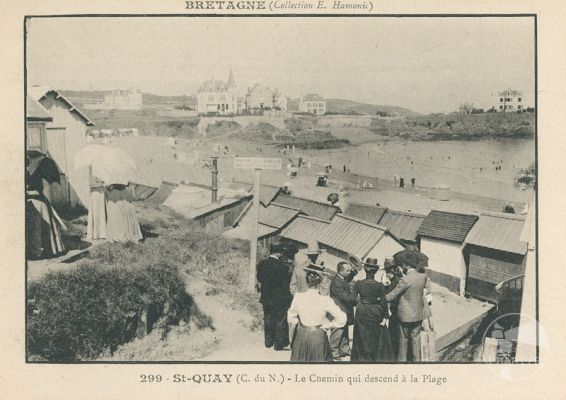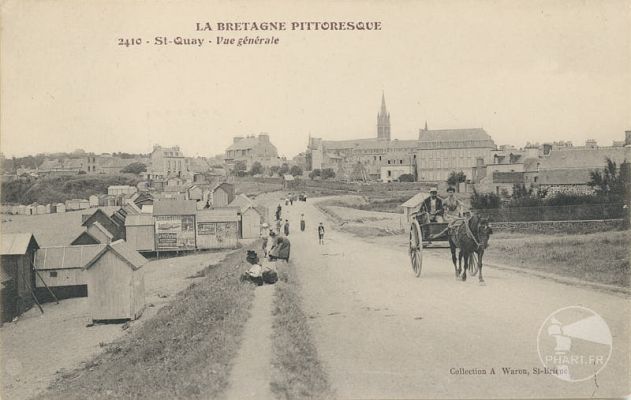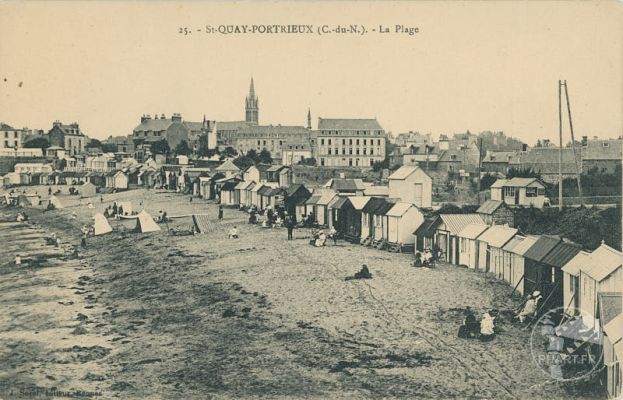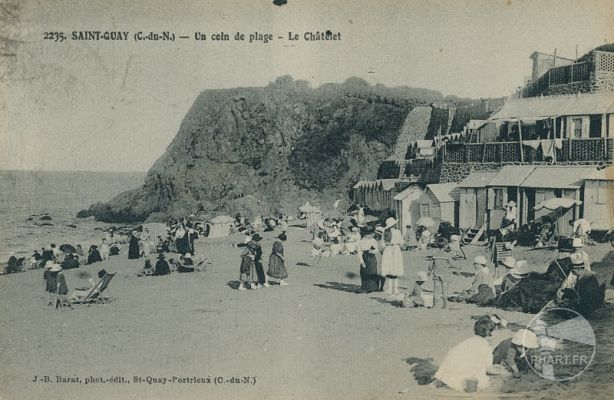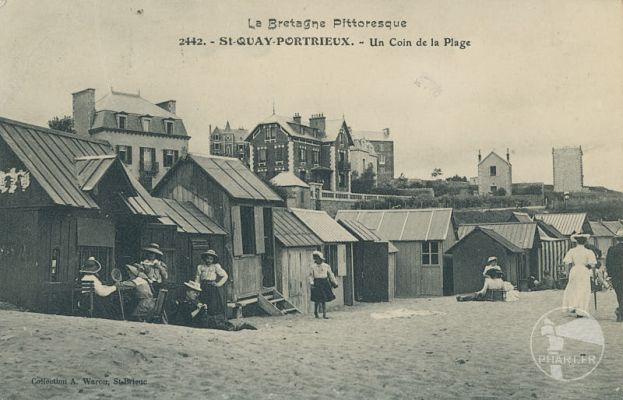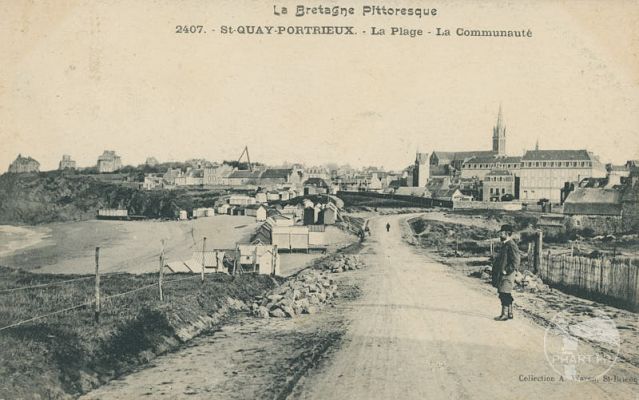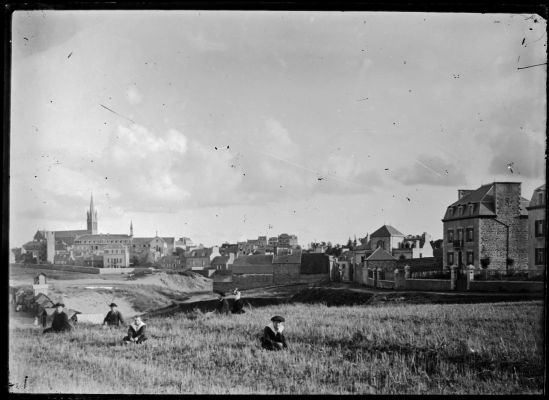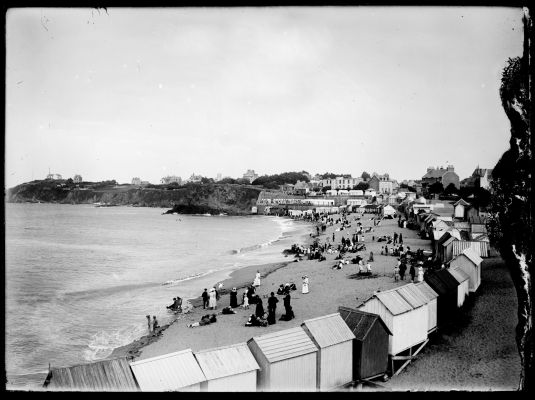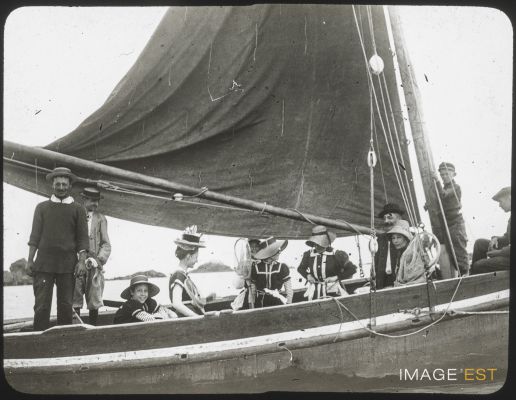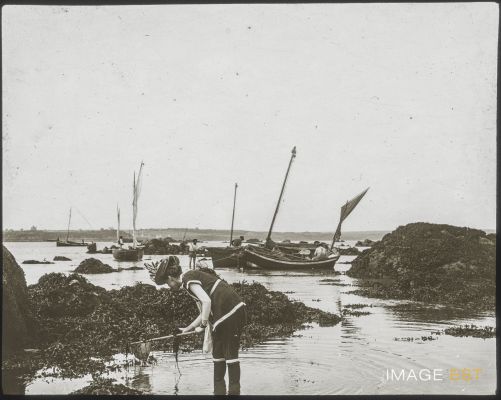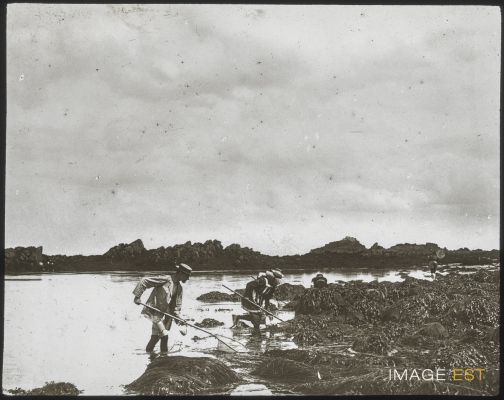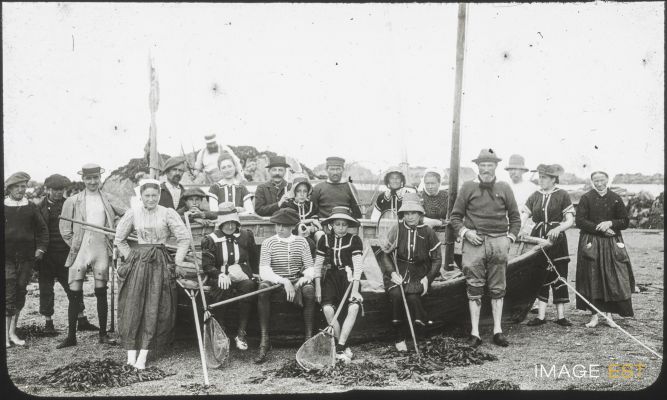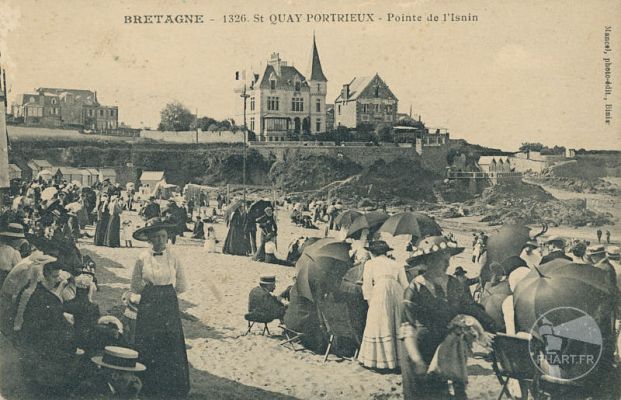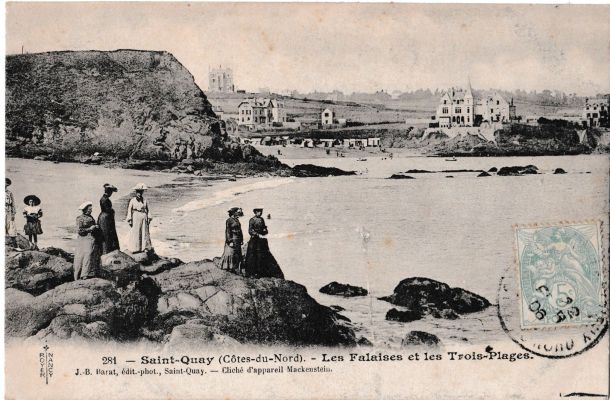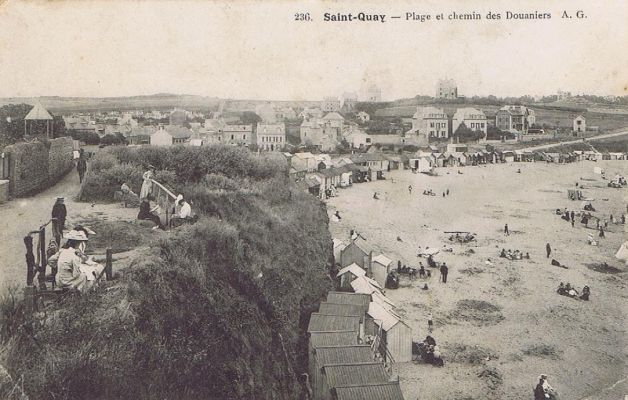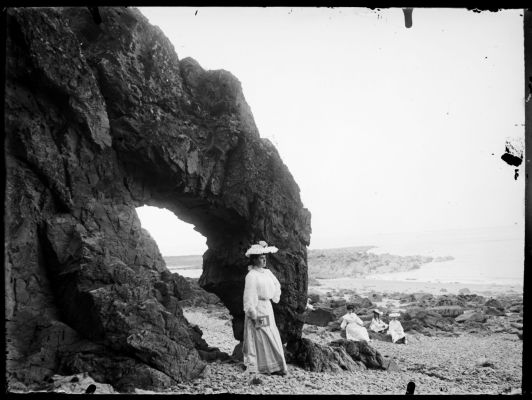THE BEGINNING OF SEA BATHING
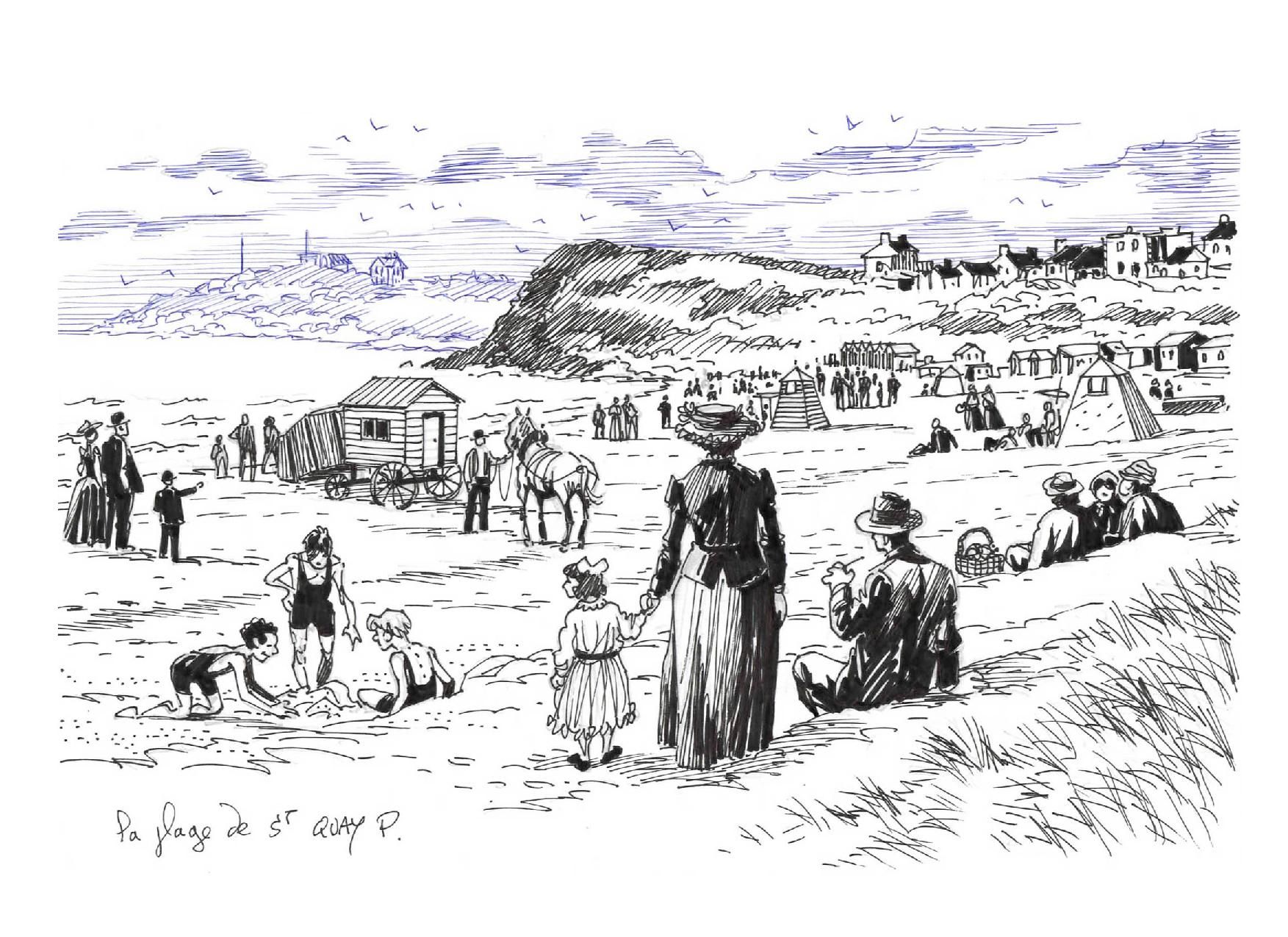
Illustration Erwan Le Saëc
The beginnings of seaside tourism in Saint-Quay-Portrieux
In 1841, a Guingamp doctor prescribed seawater baths for two of his patients. These ladies of Guingamp’s good society decided to travel to Saint-Quay-Portrieux and, in the absence of a proper hotel, asked for hospitality from the religious community next to the beach, which often welcomed retreatants. Despite the unusual purpose of their stay, the sisters agreed to receive them. (See “parish church” sign)
Long feared and loathed when it came to diving into the sea, by the mid-19th century the sea had become a kind of universal remedy. European physicians and hygienists discovered the therapeutic virtues of sea baths, which seemed to cure just about everything…
These baths had to be carried out under specific conditions: the benefits of “seizure” were sought above all, and required a cold bath, either in the English Channel or in the Atlantic. They are carried out under the supervision of specialized staff, who may also perform “blade” bathing. The “patient” is plunged into the sea by a member of the medical staff, at the precise moment when the wave breaks, to provoke a suffocation deemed indispensable… this is Daumier’s drawing dated 1853. The first bathhouse specialized in sea bathing opened in Dieppe in 1822.
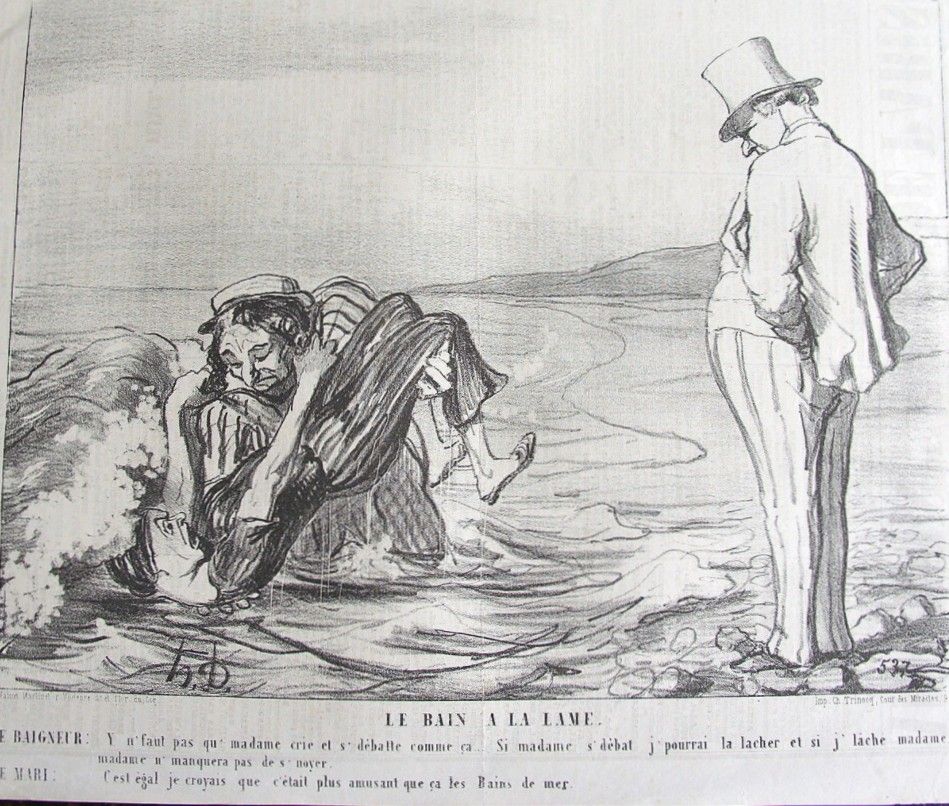
Le bain à la lame – Daumier – Charivari 1853.
Saint-Quay-Portrieux didn’t have a specialized establishment, nor a “bath à la lame”, but the nearby beach was the perfect place to enjoy the benefits of the cure.
The beauty of the landscape and the pleasures of the coast soon took precedence over the therapeutic aspect, and in the years that followed, these two pioneers returned for pleasure, accompanied by their family friends.
At the end of the 19th century and beginning of the 20th, many artists attracted by the sea and port life came to stay in Brittany (see the “Eugène Boudin” and “Paul Signac” panels on the port). From 1863, the arrival of the train in Saint Brieuc encouraged the first summer visitors, many of whom came from Paris. The trip was well worth it: it took a day or night by train from Paris to Saint-Brieuc, then several hours by post car to Saint-Quay-Portrieux…
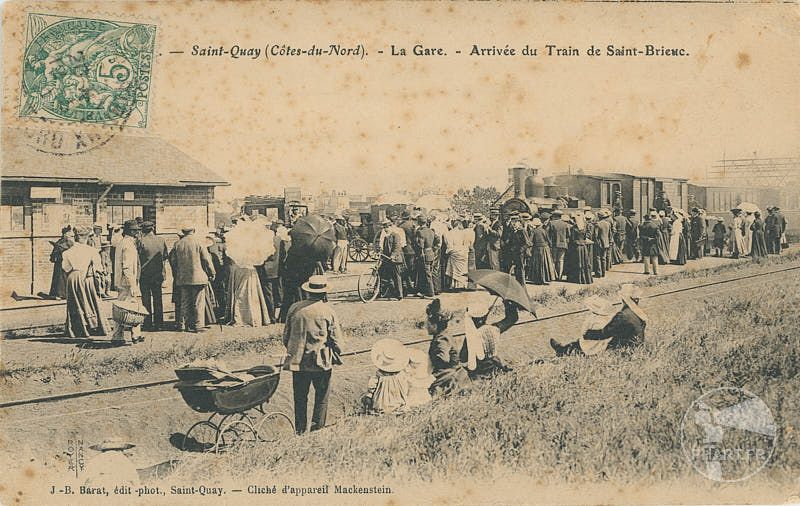
This was also the period when the first holiday homes were built. The last third of the 19th century saw the beginnings of seaside tourism, accentuated by the opening of the “petit train des Côtes du Nord” line, which served Portrieux and Saint-Quay from 1905.
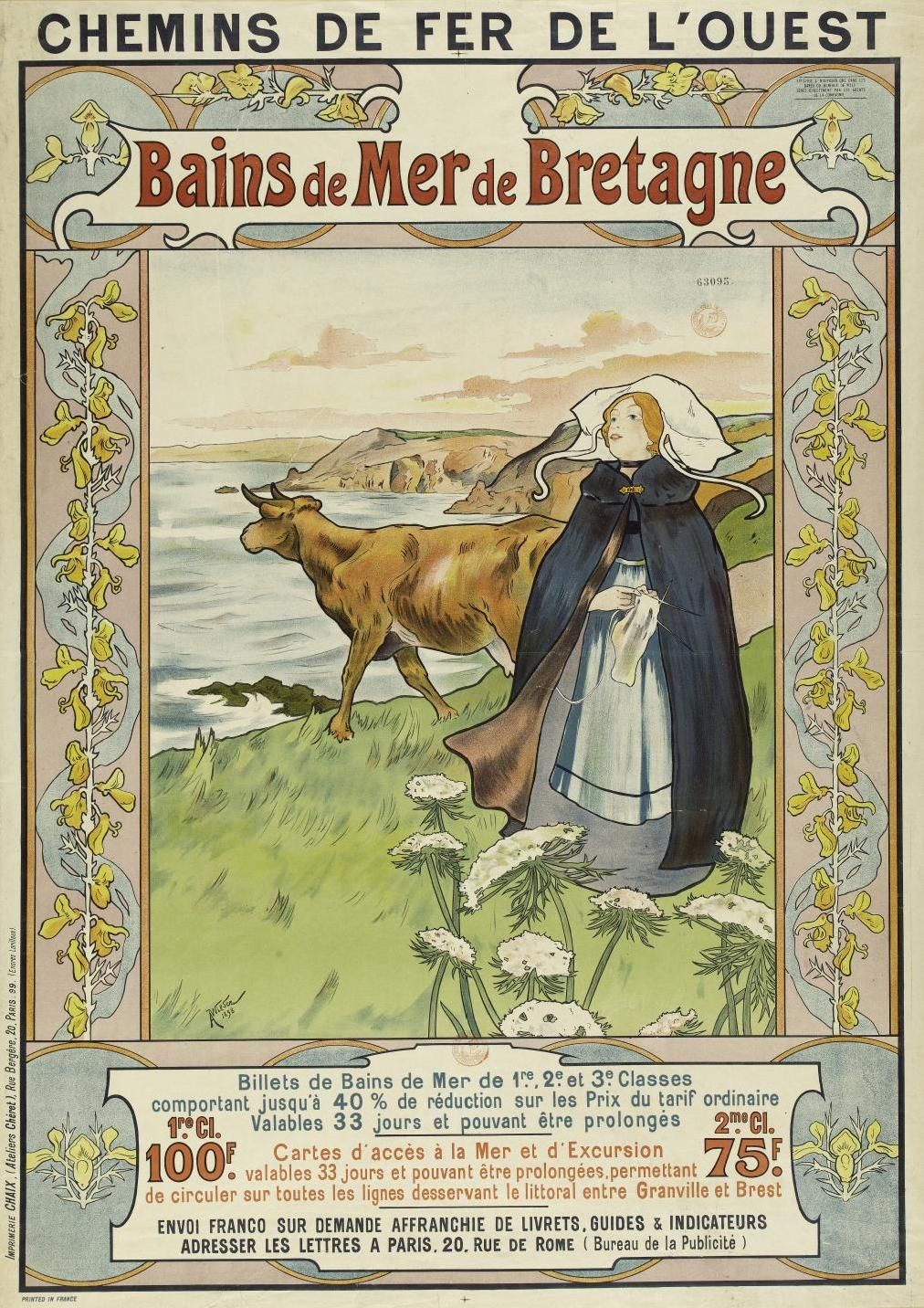
Affiche André Wilder – 1898
During the summer season, sea bathing enthusiasts are numerous. They stay in “chez l’habitant”, furnished houses, boarding houses and the first hotels to open near bathing areas.
For the commune, this valuable financial resource partly compensated for the decline in fishing. In the 1890s, realizing that “tourists” were now its main source of income, the town undertook the necessary water supply and sewerage works, and introduced electricity. This was a lengthy and necessary project, as Saint-Quay-Portrieux lacked all three elements…
In 1893, Ernest Le Nordez’s “Guide des baigneurs à Saint-Quay-Portrieux” listed two “grand hotels” and a more modest one, located on the Portrieux harbor.
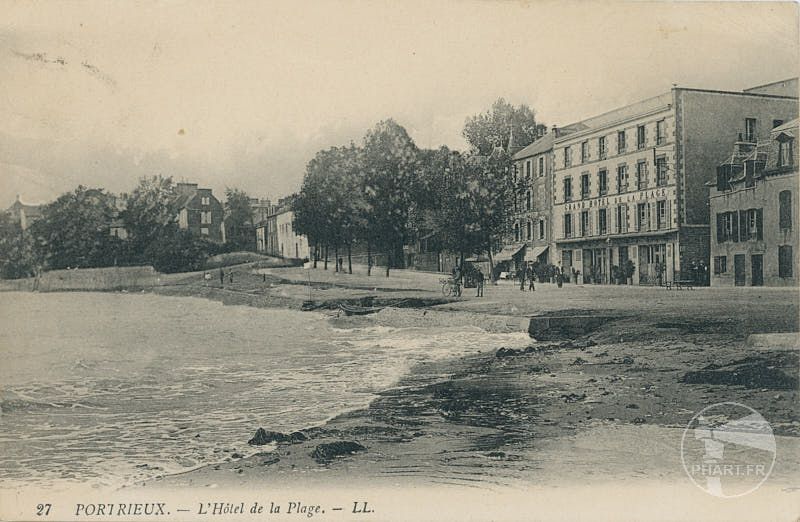
In Saint-Quay, close to the beach, it was the community of nuns that first opened a hotel to welcome “a few Christian families and people who, during the sea-bathing season, prefer a simple life to worldly pleasures”.
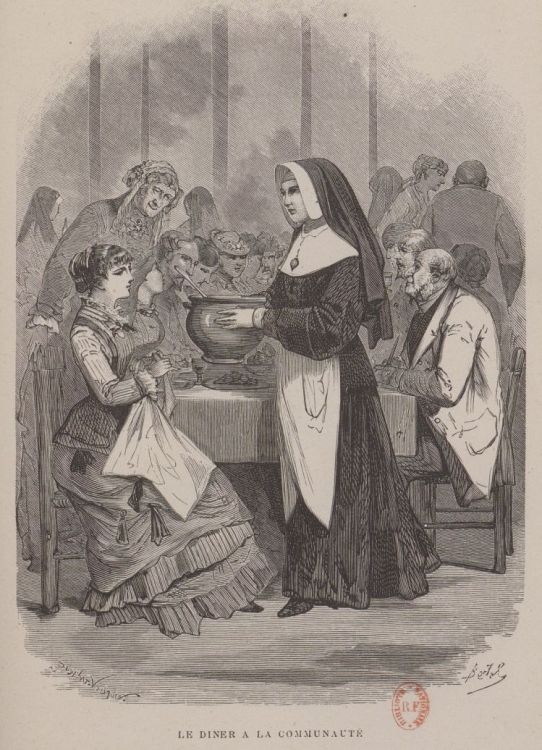
Les plages de France – Bertall – Flammarion 1886.
Swimwear
The bathing attire of these first “bathers” conformed to that of the time. An 1879 municipal by-law states:
“It is forbidden to all foreigners or inhabitants of the commune to bathe on the Portrieux beach and that of the town of Saint-Quay-Portrieux without being dressed in knee-length shorts or pants and a blouse or closed vest, with or without sleeves”.
The costume was highly codified: men wore a long-sleeved swimming costume reaching down to the calf, while women wore bloomers covered by a dress tied at the waist, covering the knees, and a bonnet on the head… It was not until much later, in the 1920s, that the ‘bathing costume’, closer to what we know today, appeared.
Designing bathing areas
On the beaches, the first rolling “bathing cabins”, sometimes horse-drawn, enabled people to change in complete privacy.
Later, fixed wooden bathing cabins were installed above the Comtesse and Saint-Quay beaches, which later became known as the “Casino beach”. During the summer months, they were a popular meeting place for families.
Some of these cabins are fitted out to receive water from a pump, enabling hot footbaths to “do the reaction”.
On the harbour beach, bathing areas have been set aside and cabins installed for hotel guests. Some conflicts of use with the port’s usual activities, such as unloading ships, removing sand to fertilize fields, and farmers’ habit of bathing their livestock in the port, will have to be resolved by municipal by-laws.
